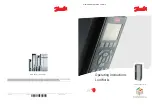
9
©2009 Smarter Tools, Inc. All Rights Reserved
Owner’s Manual
General Safety Precautions (cont’d)
_________________________________________________________________________________________________
Installation
•
Ensure installation meets all applicable safety, and local and national electrical codes. Have installation performed
by a qualified, licensed electrician and building contractor.
•
All electrical work, including the earth-ground connection, should be completed by a licensed electrician.
•
Any separate fuel storage or generator supply facility must be built or installed in full compliance with all relevant
local, state, and federal regulations.
•
It is recommended to use the generator only in well ventilated outdoor areas. A running gasoline engine will
generate carbon monoxide, a colorless, odorless gas that, if inhaled, can cause serious injury or death. If the
generator is installed indoors, exhaust fumes must be piped out of the building using leak-free, heat resistant
piping. Pipes and silencer should not use any flammable materials, nor should they be installed near the same.
Generator exhaust fumes must be within legal limits and installation must always meet local building codes.
•
If the generator is installed outdoors, it must be weatherproofed and should be soundproofed. It should not be run
outdoors without protection of the generator and wiring conduit.
•
Two or more people should assist when moving or lifting this product. Never lift the Generator using the engine or
alternator lifting lugs. Connect lifting equipment to the Frame of the generator.
•
Before lifting the generator, ensure the lift rigging and supporting structure are in good condition, and are rated to
lift such a load.
•
Keep all personnel away from the suspended generator during relocating.
•
The supporting floor/ground surface should be level, and strong enough to safely hold the weight of the generator.
If the floor/grounded surface is not level, strong cross members should be placed under the full length of the
generator frame at its low side.
•
For trailer installation, the generator should be mounted on the center point of the trailer, over the wheels. The
trailer must be capable of supporting the weight of the generator and all contents (tools, etc.)
•
Install sound-and weather-proofing only when it is not raining or snowing to avoid trapping moisture within the
generator’s area.
Mechanical
•
Always make sure the power switch is in its “OFF” position. Disconnect the spark plug wire, and allow the engine
to completely cool before carrying out maintenance.
•
Check for damaged parts. Before using the generator, any part that appears damaged should be carefully
checked to determine that it will operate properly and perform its intended function. Check for alignment and
binding of moving parts, any broken parts or mounting fixtures, and any other condition that may affect proper
operation technician.
•
The generator is designed with guards for protection from moving parts. In any case, care must still be taken to
protect personnel and equipment from other mechanical hazards when working around the generator.
•
Do not operate the generator with safety guards removed. While the generator is running, do not attempt to reach
around the safety guard for maintenance or any other reason.
•
Keep hands, arms, long hair, loose clothing, and jewelry away from moving parts. Be aware that when engine
parts are moving fast they cannot be seen clearly.
•
Keep access doors on enclosures closed and locked when access is not required.
•
When working on or around the generator always wear protective clothing including ANSI approved safety gloves,
safety eye goggles, and safety hat.
•
Do not alter or adjust any part of the generator that is assembled and supplied by the manufacturer.
•
Always follow and complete scheduled engine and generator maintenance.










































